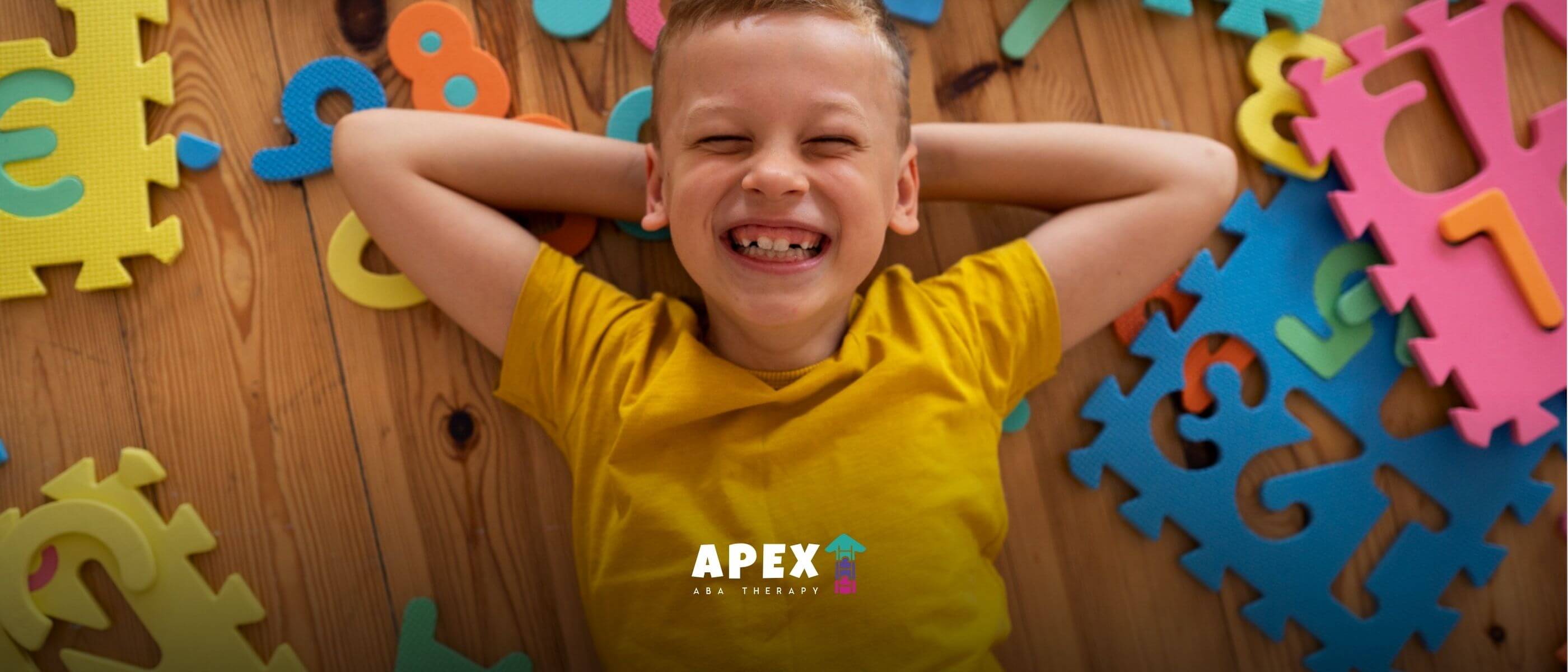Addressing Sensory Seeking in Autism
Unlock the secrets of addressing sensory seeking in autism. Learn therapeutic interventions and sensory-friendly strategies.

Addressing Sensory Seeking in Autism
Understanding Sensory Processing Differences
In individuals with autism, sensory processing differences can manifest in various ways. Two common behaviors associated with sensory processing differences are sensory seeking behavior and sensory avoiding behavior.
Sensory Seeking Behavior
Sensory seeking behavior refers to the active seeking out of sensory experiences to fulfill one's sensory needs. These individuals may engage in activities or behaviors that provide them with the sensory input they crave. For example, they may seek out loud noises, tactile stimulation, or engage in repetitive movements [1].
The specific sensory seeking behaviors can vary from person to person. Some individuals may seek specific types of sensory input, while others may have a broader range of sensory seeking behaviors. It's important to note that sensory seeking behavior can serve as a way for individuals to regulate their sensory experiences and find comfort in their environment.
Sensory Avoiding Behavior
On the other hand, sensory avoiding behavior refers to actively avoiding or withdrawing from sensory stimuli that an individual finds overwhelming or uncomfortable. These individuals may exhibit behaviors such as covering their ears in response to loud noises, avoiding certain textures, or feeling anxious in crowded places.
Sensory avoiding behavior can significantly impact an individual's daily life. It may affect their personal relationships, educational or work performance, and overall well-being. These individuals may find it challenging to navigate certain environments or participate in activities that involve sensory stimuli they find aversive.
It's important to note that individuals with sensory processing differences may exhibit characteristics of both sensory seeking and sensory avoiding behavior. Some individuals may engage in sensory seeking behaviors in certain contexts while avoiding sensory input in others. The interplay between these behaviors can be complex and fluctuate over time, influenced by factors such as stress or environmental changes [1].
Understanding and addressing sensory seeking and sensory avoiding behaviors in individuals with autism require a personalized approach. It's crucial to observe and understand an individual's specific sensory preferences and sensitivities. Seeking guidance from professionals specializing in sensory processing disorders, such as occupational therapists, can be instrumental in effectively addressing and managing these sensory needs [1]. By providing appropriate support and interventions, individuals with sensory processing differences can navigate their sensory experiences more effectively and enhance their overall well-being.
Impact of Sensory Overload
For individuals with autism, sensory overload can be a significant challenge that affects their daily lives. Sensory overload occurs when the brain is overwhelmed by the sensory information it receives, leading to a range of symptoms and difficulties [2]. Let's explore the challenges of sensory overload and how individuals with autism cope with it.
Challenges of Sensory Overload
Sensory overload can affect autistic individuals, regardless of whether they are sensory seeking or sensory avoiding. It occurs when intense sensory stimuli overwhelm the individual's ability to cope, leading to feelings of intense anxiety, a need to escape, or difficulty communicating [3]. This overload can be triggered by a single event or build up over time due to daily efforts to cope with sensory sensitivities [4].
The challenges of sensory overload can manifest in various ways, such as:
- Heightened sensitivity to certain sounds, lights, textures, or smells, causing discomfort or distress.
- Difficulty filtering and processing sensory information, resulting in sensory confusion or overload.
- Impaired ability to focus, concentrate, or engage in tasks due to overwhelming sensory input.
- Increased anxiety, irritability, or meltdowns in response to sensory triggers.
- Difficulty with communication or social interactions when sensory overload hinders information processing or attention.
Understanding and addressing these challenges are crucial for individuals with autism to navigate their environments and engage in daily activities.
Read more about: Powerful Examples of Sensory Overload in Autism
Coping with Sensory Overload
Coping mechanisms for sensory overload can vary among individuals with autism. Some strategies that may help include:
- Sensory breaks: Taking regular breaks in a quiet and calm environment can provide relief and help regulate sensory input.
- Deep pressure or proprioceptive input: Engaging in activities that provide deep pressure or proprioceptive input, such as using weighted blankets or engaging in physical exercise, can help calm the nervous system.
- Self-regulation techniques: Learning and practicing self-regulation techniques, such as deep breathing exercises or mindfulness, can help manage anxiety and sensory overwhelm.
- Visual supports: Using visual supports, such as schedules or visual cues, can help individuals with autism anticipate and navigate sensory-rich environments.
- Social support: Seeking support from understanding friends, family, or professionals who can provide guidance and assistance during overwhelming sensory experiences.
It's important to note that coping strategies may vary from person to person. What works for one individual may not work for another. Therefore, it's essential to tailor the coping mechanisms to each person's unique sensory needs and preferences.
By understanding the challenges of sensory overload and implementing effective coping strategies, individuals with autism can navigate their sensory experiences more comfortably and participate fully in their daily lives. To further explore strategies for addressing sensory needs, consider reading our section on managing sensory seeking behaviors and managing sensory overload in autism.
Sensory Processing Disorder in Autism
Sensory processing differences (SPDs) are commonly observed in individuals with Autism Spectrum Disorder (ASD), leading to atypical responses to sensory stimuli. Understanding the prevalence and neural mechanisms of sensory processing disorder in autism is crucial for addressing the unique challenges faced by individuals on the spectrum.
Prevalence of SPD in Autism
SPD affects an estimated 5%–16% of children in the United States. It occurs in about 90% of people living with ASD and about 50-64% of people living with attention deficit hyperactivity disorder (ADHD) [5]. The high prevalence of SPD in individuals with autism highlights the need for effective interventions and support to address sensory challenges.
Neural Mechanisms of SPD in Autism
Altered neural pathways, sensory gating dysfunction, and atypical sensory modulation contribute to SPDs in individuals with ASD [6]. These differences in neural processing can make it difficult for individuals with SPDs to filter out irrelevant sensory information and to integrate sensory information from different sources.
Research suggests that sensory symptoms in children with ASD can include strong interests or aversions, and interventions commonly focus on aversions/challenges, meeting sensory needs, or addressing processing deficits to improve individuals' abilities to interact with their environments. Sensitivities to sensory stimuli can significantly interfere with children's daily activities, participation in school, social interactions, and self-care.
To address sensory processing disorder in autism, various therapeutic interventions have shown promise. These include occupational therapy, which focuses on enhancing sensory integration and improving functional skills [6]. Sensory integration therapy (SIT) is another approach that aims to help individuals with ASD integrate sensory information more effectively.
By understanding the prevalence and neural mechanisms of SPD in autism, professionals and caregivers can develop targeted interventions to improve sensory functioning and reduce associated behavioral issues. Additionally, creating sensory-friendly environments and providing adaptive tools for sensory support can greatly enhance the well-being and quality of life for individuals with autism and sensory processing challenges.
Therapeutic Interventions
Addressing sensory seeking behavior in individuals with autism requires specialized therapeutic interventions that aim to provide support and develop strategies to manage sensory challenges. Two commonly used therapeutic approaches are occupational therapy and sensory integration therapy.
Occupational Therapy for SPD
Occupational therapy (OT) plays a significant role in the management of sensory processing differences in individuals with autism. It offers sensory diets tailored by occupational therapists to help individuals manage their sensory needs throughout the day, assisting in developing coping strategies for sensory challenges that may interfere with daily activities [7].
During occupational therapy sessions, therapists work closely with individuals to identify their specific sensory needs and develop individualized interventions. These interventions may involve activities and exercises that provide sensory input in a controlled and structured manner. Occupational therapists may also use therapeutic tools and equipment, such as weighted blankets, sensory brushes, and deep pressure techniques, to help individuals regulate their sensory experiences.
The ultimate goal of occupational therapy is to enhance sensory processing and integration, enabling individuals to participate more effectively in daily tasks and routines. By addressing sensory seeking behaviors, occupational therapy can promote self-regulation and improve overall functioning.
Sensory Integration Therapy
Sensory integration therapy is another therapeutic intervention commonly used to address sensory challenges in individuals with autism. This approach provides customized interventions with specific exercises and routines to help individuals respond more effectively to sensory stimuli.
Sensory integration therapy focuses on providing sensory experiences in a controlled and structured environment. Therapists may use therapeutic equipment like swings, trampolines, and resistance tunnels to offer sensory feedback and stimulation. By engaging in these activities, individuals can gradually learn to modulate their responses to sensory input and develop more adaptive behaviors.
The goal of sensory integration therapy is to improve sensory processing and integration skills, enabling individuals to participate more fully in daily activities and interact more effectively with their environment. This intervention can help individuals with autism manage sensory seeking behaviors and enhance their overall sensory experiences.
Both occupational therapy and sensory integration therapy are evidence-based interventions for addressing sensory challenges in individuals with autism. These therapeutic approaches, along with other sensory-focused interventions and environmental modifications, aim to enhance sensory experiences and improve the well-being and functioning of individuals with autism. By incorporating these interventions into a comprehensive treatment plan, individuals with autism can receive the support they need to navigate their sensory world more effectively. For more information on creating a sensory-friendly environment, refer to our article on creating a sensory-friendly environment.
Read more about: Sensory Integration Therapy & Autism
Creating Sensory-Friendly Environments
When it comes to addressing sensory seeking in individuals with autism, creating sensory-friendly environments plays a vital role. These environments aim to minimize sensory overload and provide the necessary support for individuals with sensory processing differences. In this section, we will explore the importance of sensory-friendly spaces and the adaptive tools that can assist in sensory support.
Importance of Sensory-Friendly Spaces
Sensory-friendly spaces, both at home and in educational settings, are crucial for individuals with autism who experience sensory sensitivity [8]. These spaces are carefully designed to minimize sensory overload and provide a calming atmosphere for individuals with sensory processing differences.
In a sensory-friendly space, the lighting is often soft and diffused to reduce glare and harsh contrasts. The use of natural light and dimmable fixtures allows for easy adjustment based on individual preferences. Additionally, the colors and visual stimuli in the environment are carefully chosen to promote a sense of calmness and reduce sensory distractions.
The acoustics of a sensory-friendly space are also taken into consideration. Sound-absorbing materials, such as carpets or acoustic panels, help to minimize background noise and echo, creating a more peaceful environment. This is particularly beneficial for individuals who are sensitive to auditory stimuli.
Furniture and layout in a sensory-friendly space are designed to provide flexibility and comfort. Soft seating options, cozy corners, and designated quiet areas allow individuals to retreat and regulate their sensory experiences as needed. Furthermore, clear pathways and uncluttered spaces help reduce visual distractions and promote a sense of order.
Adaptive Tools for Sensory Support
In addition to creating sensory-friendly spaces, adaptive tools can provide valuable support for individuals with sensory processing differences. These tools are designed to reduce sensory triggers and provide appropriate sensory input when needed.
One common adaptive tool is noise-canceling headphones. These headphones help individuals with auditory sensitivity by reducing or blocking out unwanted sounds, allowing them to better focus on their tasks or activities. They can be particularly useful in noisy environments or during situations where loud noises are expected.
Specialized lighting is another adaptive tool that can make a significant difference for individuals with sensory sensitivity. Some individuals may have aversions to certain types of lighting, such as fluorescent lights. Using adjustable or filtered lights can help create a more comfortable environment by reducing the intensity or altering the color temperature of the lighting.
Weighted blankets or vests are adaptive tools that provide deep pressure input, which can have a calming effect on individuals with sensory seeking behaviors. The gentle pressure from these weighted items can help regulate sensory input and promote relaxation.
Other adaptive tools may include fidget toys, textured surfaces, or tactile objects that individuals can use to engage their senses in a controlled and appropriate manner. These tools provide individuals with opportunities for self-regulation and sensory exploration.
By incorporating sensory-friendly spaces and utilizing adaptive tools, individuals with autism can experience increased comfort and reduced sensory overload. These environments and tools are essential components in addressing sensory seeking behaviors and promoting positive sensory experiences.
Addressing Sensory Needs
When it comes to individuals with autism, addressing their sensory needs is essential for creating a supportive and comfortable environment. This section focuses on managing sensory seeking behaviors and strategies for sensory avoidance.
Managing Sensory Seeking Behaviors
Sensory seeking behaviors refer to the active pursuit of sensory experiences to fulfill one's sensory needs. These behaviors can vary widely among individuals with autism, with some seeking specific types of sensory input while others exhibit a broader range of sensory seeking behaviors [1].
To effectively manage sensory seeking behaviors, it is crucial to identify and understand the specific sensory needs of each individual. Some common sensory seeking behaviors in autism can include seeking intense sensory input, such as engaging in repetitive movements, seeking tactile stimulation, or seeking out certain sounds or textures. Here are some strategies that may help:
- Provide alternative sensory outlets: Encourage engagement in appropriate sensory activities that meet their sensory needs, such as using sensory toys, engaging in physical activities, or providing opportunities for deep pressure input through activities like weighted blankets or compression clothing.
- Establish sensory breaks: Create designated spaces where individuals can engage in sensory activities or take a break when they feel overwhelmed. These spaces can be equipped with sensory tools and materials that cater to their specific sensory preferences.
- Offer a variety of sensory experiences: Provide a range of sensory experiences that align with their sensory seeking behaviors. This may include incorporating music, movement, or tactile experiences into their daily routines.
Strategies for Sensory Avoidance
On the other end of the spectrum, individuals with autism may also exhibit sensory avoidance behaviors, where they actively try to avoid certain sensory stimuli. Sensory avoidance behaviors can manifest as withdrawing from physical touch, covering ears to block out loud sounds, or avoiding certain textures or smells [3].
To address sensory avoidance behaviors effectively, it is important to create a sensory-friendly environment that minimizes overwhelming stimuli. Consider the following strategies:
- Modify the environment: Identify and minimize sensory triggers that may cause distress, such as reducing fluorescent lighting, using noise-cancelling headphones, or providing visual supports like visual schedules or cue cards.
- Gradual exposure: Introduce sensory stimuli in a controlled and gradual manner to help individuals build tolerance and reduce avoidance. This can involve desensitization techniques, such as gradually increasing exposure to specific textures or sounds over time.
- Offer choice and control: Empower individuals by involving them in decision-making processes related to their sensory experiences. Providing options and allowing them to choose the level of sensory input they are comfortable with can help reduce avoidance behaviors.
By understanding and addressing the sensory needs of individuals with autism, we can create an environment that supports their well-being and allows them to thrive. Effective management of sensory seeking behaviors and strategies for sensory avoidance can help individuals regulate their sensory experiences and promote their overall sensory well-being. For more information on creating a sensory-friendly environment, refer to our article on creating a sensory-friendly environment.
References
Frequently Asked Questions

How to Teach Kitchen Safety to Autistic Children: A Parent’s Guide
Teaching kitchen safety to autistic children is easier with the right strategies. Learn step-by-step tips to create a safe environment and build essential skills.

How to Manage Attention-Seeking Behaviors in a Positive, Supportive Wayr
Learn how to reduce attention-seeking behaviors in children using positive reinforcement, clear boundaries, and communication skills. Find helpful strategies here.

Can Play Therapy and ABA Therapy Work Together to Help Your Child?
Combining play therapy with ABA therapy offers a powerful way to enhance your child’s growth. Find out how these therapies work together for lasting benefits.



